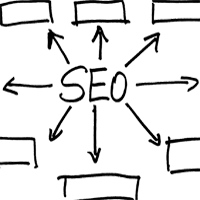Mastering Search - Inside the Black Box

GOOGLE ALGORITHM CHANGES TO KNOW
Search engine, digital advertising, and now emerging social media powerhouse Google has always played its cards close to the chest in relation to the factors that influence search result positioning.
In the past few months, however, the company has made very public efforts to educate and inform the Web community about the hundreds of algorithm changes and tweaks it makes on a yearly basis.
November and December saw the first of these public notices, and while there is a great deal of room left for interpretation for search engine optimization professionals, few would disagree that many of the insights shared are actually quite actionable.
Let's take a peek into Google's black box and analyze what these changes mean for digital marketers.
- Google indicated that it is now more likely to pick text from the actual page content, and less likely to use text that is part of a header or menu, for use in the snippets that appear on search results. While Google has long disregarded most page meta data (meta keywords, titles and description), this change indicates to many that spending more time optimizing page content and sitewide experience will yield better results on the search results pages.
- Perhaps most significant, particularly for those responsible for link building, Google indicated that it has begun deprecating the value of anchor text within inbound links in the influence of search result page titles. This means that all of the work SEO professionals have put into varying the anchor text used in their link-building campaigns may ultimately be for naught. Instead of concentrating on the variations of relevant keyword anchor text, perhaps it is best to provide more in the way of strong calls to action.
- As applications for mobile, the desktop and even the browser continue to become popular, Google has made strides in helping developers provide an additional layer of information. By extending coverage to include applicationrich snippets, consumers searching for different applications will begin encountering information about the apps such as reviews, ratings, offers (where it can be found), cost, date published, OS required and more, including file size, format and even the features provided.
- In another very important change, Google indicated that it has added "new signals" to indicate which page is "original" and which is not. While Google obviously won't reveal what those individual signals are, over time consumers can expect less duplicate content in the search results. Many search engine optimization professionals believe that the change may be as a result of the introduction of authorship markup (specifically the rel-author tag - read https://wsm.co/j7JfsD) which was introduced in June 2011.
- A modification (and additional processing) on the top set of results ensures that Google won't show too many results from one site (called "host crowding"). Expect a more fair and balanced search results page. - Results for related queries have also apparently been a focus as well. A refinement has been made that will ensure that sites/pages which only "partially" match the original query are seen less often. Why Google was in some instances returning only partial matches to a user query is up for debate, but expect a more relevant group of listings as a result. This may also have something to do with the notification that Google has made a change to make more longtail content available in its index.
- Recency is another issue that seems top-of-mind at Google. In addition to indicating that it has improved its handling of date-based search results (specifically when a user has chosen a date range), Google also noted that its blog search index is now more comprehensive and will feature fresher results in the natural search results. The takeaway? If you are not publishing new content regularly, you most certainly should be.
Remember that hundreds of changes are made each year to Google's algorithms and those mentioned above are really just the start - but they are likely the most important. The search engine has also deprecated the value of citations (references from multiple documents on the Web) in image search; made modifications to better determine image freshness, offering up more autocomplete predictions; released a new algorithm for automatically detecting placeholder sites (focusing on parked domains), and made several layout changes to improve usability on tablet devices.
Keep in mind that it is still pretty dark in Google's black box. Translated, that means that much of this may just be speculation. Monitoring the changes and modifications you roll out for your own SEO campaign will provide a more accurate view of the changing search landscape as it relates to your website property.
About the Author: Peter Prestipino is the Editor-In-Chief of Website Magazine. A long-time Internet marketer with over twelve years of experience, Prestipino is the author of Web 360: The Fundamentals of Web Success.









